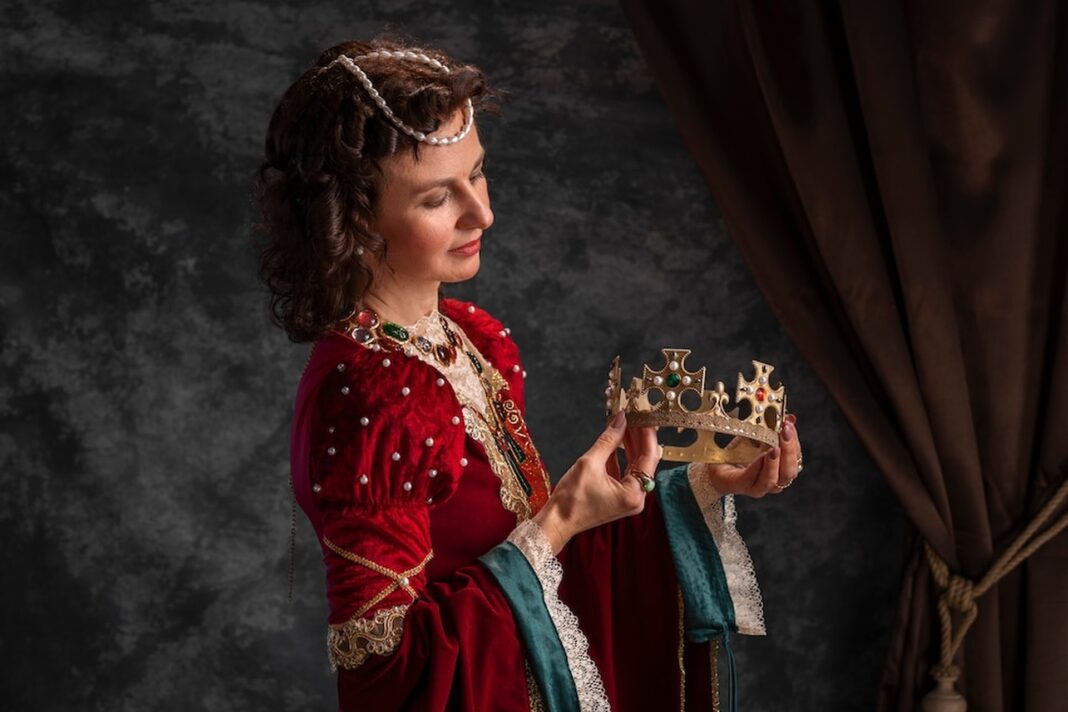Royal marriages have a long tradition. These rituals unite countries, not just two people. Royal weddings stand out for their generosity. Events that exhibit the royal family’s history captivate the people. Royal weddings have distinct stories influenced by culture and history. Thus, they reveal society’s changing ideas on marriage and kinship.
The History Of Royal Weddings: A Glorious Tradition
The history of royal marriages is rich. They generally celebrate love and strengthen political ties. Mediaeval European marriages were about power, not love. These couplings bonded families and provided peace. The love between spouses increased after the 18th century. Romance became common during royal marriages.
As society changed, ceremonies did, too. In the 19th century, elaborate feasts and decorations were widespread. Crowds watched the show. Technology altered how these events were commemorated. Photography gave people a taste of royal weddings. Many royal families released these photos. This change made royal weddings more fun for everyone.
Royal weddings nowadays combine tradition and innovation. Multi-day parties and diversified guest lists demonstrate this tendency. Beyond appearances, the event is significant. Royal weddings influence fashion, beauty, and décor. Each generation changes style while retaining symbolism. Royal marriages‘ history shows their importance.
Timeless Elegance: The Role Of Lace In Bridal Fashion
Lace has been a wedding staple for ages. Its elaborate decorations and delicate nature make it a timeless bride preference. Lace, invented in the 16th century, symbolised riches and dignity. Rich families ordered extravagant lace wedding dresses for their daughters. This tradition continues in the modern lace bridal gown.
Lace symbolises elegance and passion. Flexible, it provides unlimited wedding dress inventiveness. Modern designers artistically use lace in different shapes. The fabric improves classic and modern garments, showing its versatility. Lace gives each garment character and richness.
Lace is popular beyond gowns. Lace veils, shawls, and accessories are popular among brides. Lace gloves enhance the ensemble without overpowering it. Lace signifies history and tradition in wedding design. It links modern brides to their ancestors.
Lace is still popular, although new methods and materials have arisen. Innovations update the lace gown. The timeless beauty of lace will keep it in wedding fashion for years.
Diamonds Are Forever: Jewels Fit For Royalty
Diamonds have traditionally symbolised riches, power, and beauty. Royal weddings are exceptional. Diamonds traditionally symbolise endurance and dedication. „Diamonds Are Forever“ captures this everlasting quality. To show off their rank, royal brides wear expensive diamonds.
Each diamond’s tale is unique. Royal families‘ diamond choices frequently mirror their past. Some gems are family heirlooms. Diamonds with modern designs combine classic and modern elements. Diamond shapes and cuts have meaning, from round brilliants to cushion cuts.
Unique designs are common in royal wedding bands. These rings are made of high-quality materials by expert artisans. Additional stones with significance may be added. Royals wear diamond rings as symbols of love and responsibility. The promise made on that important day is remembered.
Many royal brides‘ jewellery has set trends. These trends typically affect jewellery sales. Royal wedding jewellery inspired countless brides under the world’s scrutiny. Royal weddings would always contain diamonds, symbolising their attractiveness and wealth.
From Crowns To Veils: The Evolution Of Bridal Headwear
Historical bridal headgear has changed greatly. Cultures have distinct styles that represent their values. Wearing crowns, veils, tiaras, and wreaths has significant implications. Brides in ancient Rome wore flame-coloured veils to represent purity. The veil became a symbol of modesty and decency.
Royal brides wore magnificent crowns and tiaras. The items frequently symbolise status and grandeur. The wedding outfit is enhanced with a hat. Modern royal weddings use expensive metal and gemstone tiaras. They radiate elegance and crown the ensemble.
Culture also impacts wedding headgear. Some cultures enjoy flower wreaths. These natural pieces represent hope and fertility. Other civilizations use headgear with themes or symbolism. The diversity in wedding rituals is beautiful.
Bridal headwear evolves with trends. Brides nowadays like a mix of classic and modern elements. Some like subtle items. Others choose royal-inspired patterns. The history of the bridal headpiece leaves a lasting impact at every wedding.
A Glimpse Into Royal Wedding Ceremonies Across Cultures
Cultures have different royal wedding ceremonies. Each has its traditions and meaning. These traditions represent societal values and ideas. Some civilizations celebrate for days. Indian royal weddings may be many days long with many rituals.
Shinto marriages in Japan are extremely traditional. Brides wear white kimonos to symbolise purity. Traditional apparel for the groom adds to the ceremony’s importance. Marriage vows are holy and ritualised. Couples connect with their culture via every gesture and deed.
Cultural variations affect venue selection. Some royal marriages are held in palaces, others in temples or natural settings. Each ceremony has a unique setting. These decisions frequently match the couple’s ideals.
Modern royal marriages mix cultures. Couples from various cultures combine their rituals to display love. This mix of cultures honours history and reflects a changing world. Royal weddings reveal the rich fabric of global cultures.
The Fashion Evolution Of Royal Brides
Royal bridal fashion has changed greatly throughout generations. Each period reflects cultural and social developments. Wedding dresses used to include heavy materials and exquisite needlework. Modern brides want lighter fabrics and sleeker shapes. This progression matches women’s shifting roles and expectations.
Fashion trends typically start with royal dresses. They influence designers and wedding collections. The extravagant gown worn by Princess Diana shaped fashion. Romantic and extravagant designs were inspired by its puffed sleeves and extended train.
Colour selections have also changed drastically. While white was favoured in Western civilizations in the 19th century, some royal brides chose the colour. Brides from varied origins often choose bold colours to express their tastes and culture.
Royal brides need embellishments. Each gown has a narrative, from lace to beading. The fashion selections emphasise originality and workmanship. Modern royal brides create a stylistic trend for future generations.
How Have Royal Wedding Traditions Changed Over Time?
Royal wedding rituals have changed significantly. Traditional rites emphasised political relationships over love. Marriages were typically political, not romantic. Romantic love became more important as society changed. Modern royal weddings highlight the couple’s love story. Globalisation has brought many cultural customs to the royal court. Blending enhances rituals and shows a more inclusive outlook.
Royal marriages are also celebrated differently. Early rituals were restricted to nobles. The public may join the celebrations via broadcasts and social media today. This accessibility has helped people bond with their royal families. Modern ceremonies emphasise personalization and purpose. Royal couples pick components from their ancestry or religion. Each shift represents a larger trend toward togetherness, love, and acceptance, contrasting with history.
What Significance Do Diamonds Hold In Royal Marriages?
Diamonds are important in royal weddings. Historically, they symbolised everlasting love and fidelity. Strength and durability indicate a royal union’s longevity. „Diamonds Are Forever“ captures this wonderfully. Diamond rings are more than ornaments in royal traditions; they symbolise devotion and faithfulness.
The type of diamond may also have significance. Certain royal families choose certain cuts or hues based on their genealogy. Personal interests and family history can influence moulding and the environment. Family-owned diamonds are typically used in weddings, adding emotion. Royal couples often commission unique pieces with their own stories. Diamonds at royal weddings symbolise history and grandeur, not just ornament.



